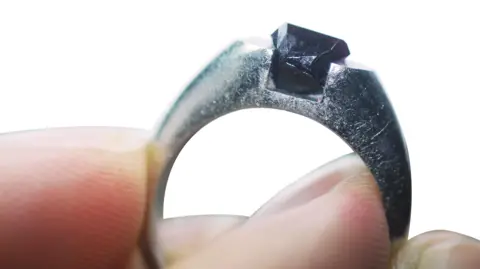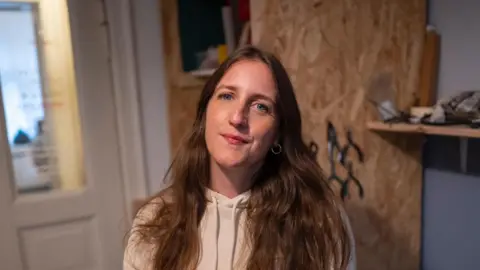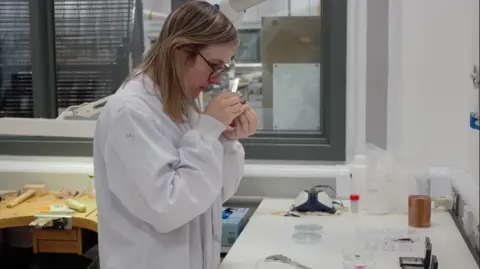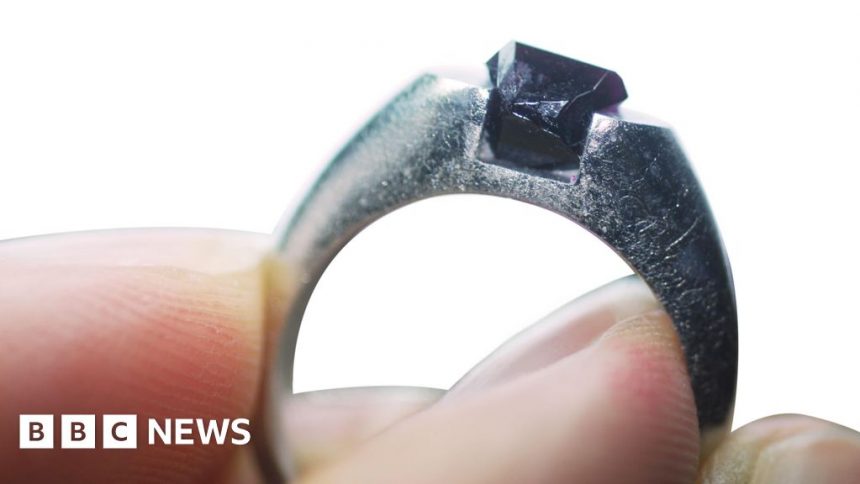‘World first’ as full-size ruby grown in lab
 University of the West of England
University of the West of EnglandA university lecturer has successfully grown a full-size ruby from a tiny offcut in what is believed to be a world-first process.
Sofie Boons, who lectures in jewellery design at the University of the West of England (UWE) in Bristol, has developed a chemical technique to kickstart the growth process.
It enables a tiny fragment of real ruby to multiply as it sits in its platinum jewellery setting.
The university believes this method, which avoids mining, has not been successfully done before.
Rebecca Enderby, a Bristol based contemporary jewellery designer who has written articles on lab-grown diamonds, said there was a changing perception of their value.
She said: “These lab-grown gemstones are not artificial. They mimic what grows over thousands of years in the earth, so they are a more affordable alternative to mined stones.”
 Chris King
Chris KingMs Enderby added the lab-grown gems were also more “environmentally sound”.
“However they use a lot of energy to create, so they should be produced using green energy providers,” she added.
 UWE
UWETo grow the gem, Ms Boons started with a ruby “seed” taken from waste gemstone offcuts.
She placed the fragment into a platinum setting, like a ring, and then used a chemical agent called a “flux” which stimulates growth once it is placed inside a furnace.
“I am experimenting growing them inside the furnace for between five and 50 hours,” said Ms Boons. “The longer time means I get crystals which are a little bit cleaner and bigger.
“I’m working to shorten the time process to make it more sustainable.”
The method challenges the notion of man-made gemstones being synthetic, she added.
“The slightly unpredictable growth features natural facets, and this I find fascinating as a jewellery maker,” she said.
The project, which is part of Ms Boons’ PhD, has now attracted a second phase of funding from UWE.
The University of Bristol has also come on board so the research can be widened to include other gemstones.
Follow BBC Bristol on Facebook, X and Instagram. Send your story ideas to us on email or via WhatsApp on 0800 313 4630.







